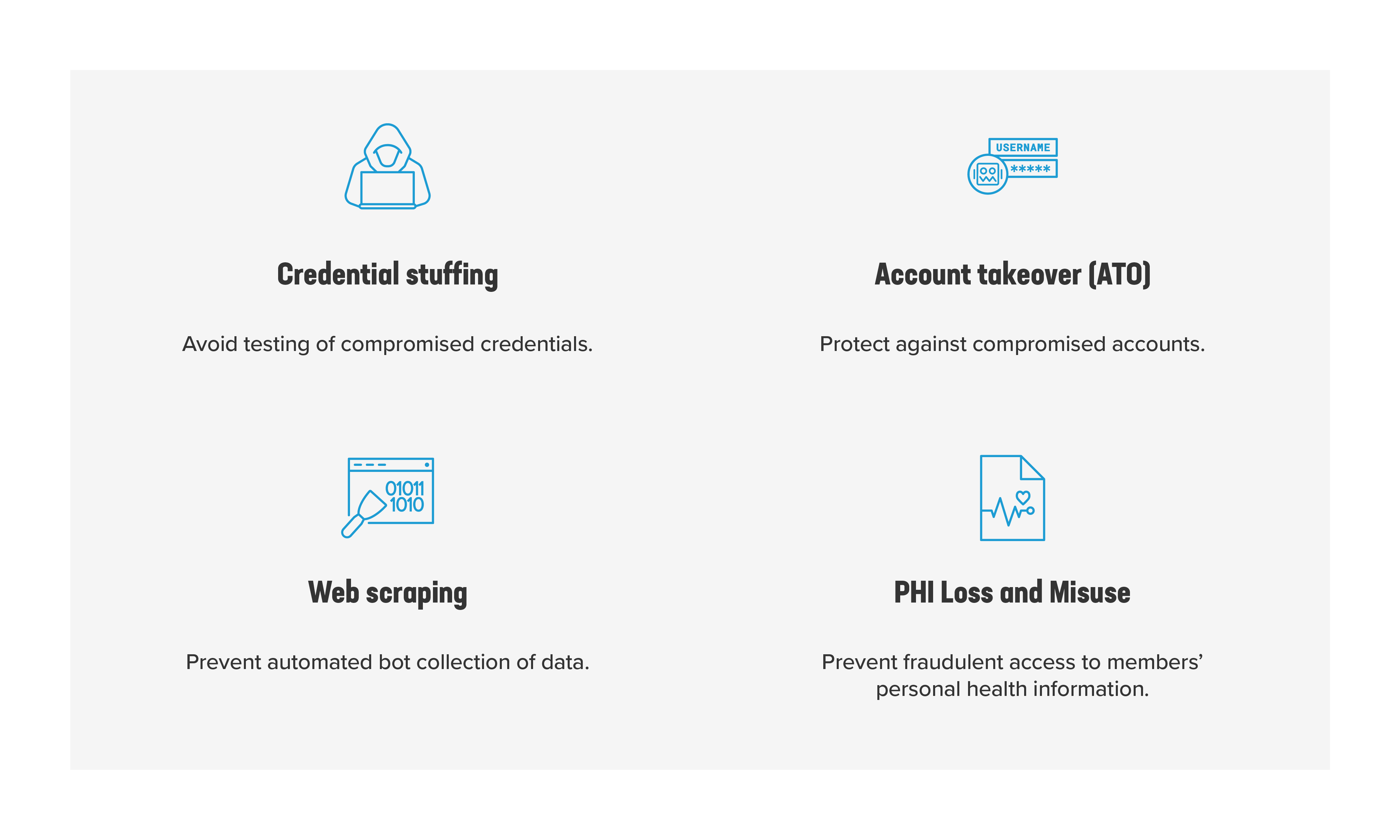Preventing Healthcare Fraud and Protecting Patient Data
How PHI theft, credential stuffing, healthcare bots, and account takeover lead to healthcare claims and payment fraud—and how to protect your organization.
Across the healthcare world, providers and payors are rapidly expanding to a distributed digital infrastructure for both delivery of care and payment processing. Accelerated by the pandemic, this transformation involves digitally processing payments and other operations through online portal accounts, making digital payments using financial information, and transferring protected health information (PHI) over applications, digital channels, and health data aggregators.
While all of this is necessary to support both the delivery and business side of healthcare, it can also expose organizations to healthcare payment and claims fraud. Indeed, almost 40 million individuals were affected by breaches classified as “hacking/IT incident” in 2021, according to the U.S. Department of Health and Human Services.
Healthcare organizations are being targeted by threat actors because of the vast amounts of personal information they store for their members—including PHI, personally identifiable information (PII), and financial information. Credential stuffing, malicious bots, account takeover attacks, and web scraping have become more prevalent across the cyberattack threat surface, raising the risk of PHI loss and misuse as well as claims payment fraud, waste, and abuse.
Rapid modernization across industries around the globe is leading to fast, seamless digital experiences, the robust protection of customer data, and innovations that build customer loyalty and expand revenue. — F5 2022 State of Application Strategy Report
In this environment, the greatest challenge is balancing the need for smooth digital experiences that reduce user friction with the need for strong security measures that ensure payment integrity and prevent identity theft and claims fraud.
Improving security at the perimeter can have a strong impact on reducing fraud losses. But to do so, organizations must first understand how cyberattacks evolve into fraud. Only when security breaches are managed and blocked can organizations decrease fraud losses that plague today’s healthcare systems.
To help healthcare organizations achieve these goals, we recently introduced a white paper, “Securing the Digital Revolution of Healthcare.” By reading this white paper, you will learn:
- How the digital healthcare revolution is driving cybercriminals and fraudsters to evolve their online schemes to take advantage of inherent vulnerabilities in web and mobile applications.
- Why the pervasiveness of online fraud is requiring organizations to adapt by abandoning traditional point solutions and reimagining organizational silos.
- How to obtain the real-time monitoring and intelligence needed to mitigate human and automated fraud before it impacts the business—without disrupting the customer experience.
Read our white paper: Securing the Digital Revolution of Healthcare

